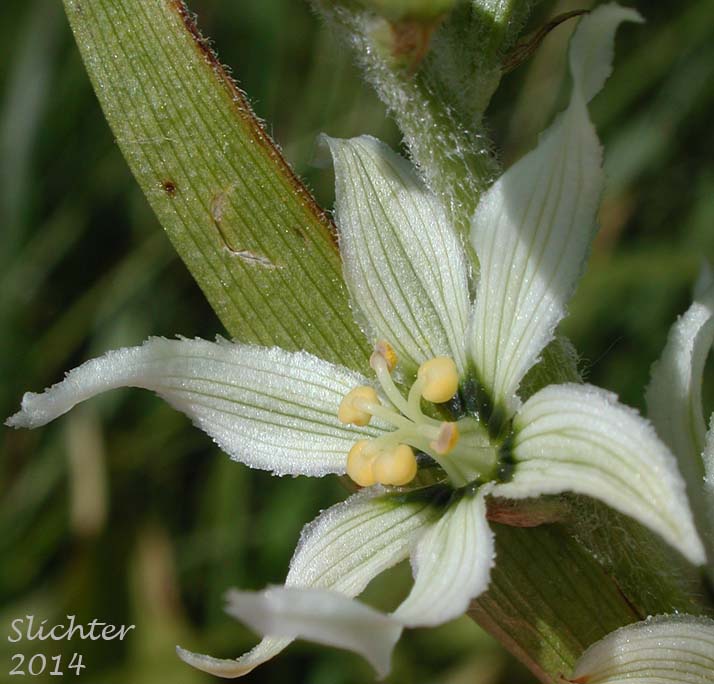

The stems of white false hellebore are mostly single, erect and rising to 2.5 meters in height. The stems are glabrous below the inflorescence, softly hairy within the inflorescence.
The leaves are numerous and parallel veined, with the basal leaves ovate to broadly elliptical or oblong-lanceolate in shape. The lower leaves measure from 20-30 cm long and from 10-20 cm wide. The leaves are narrower higher on the stem and reduced in size.
The inflorescence is a dense panicle, freely branched, with the branches rising or held to the side. The flowered branches do not droop as in green false hellebore (Veratrum viride). The six tepals (petals and sepals look alike) are obovate or broadly elliptical in shape, and white with a greenish tint (numerous green lines running the length of the tepals too). They measure from 10-17 mm long. The stamens are roughly 1/2 to 2/3 as long as the tepals.
White false hellebore is a plant of moist areas, from swamps, stream sides, meadows, and moist woodlands. It is found from the lowlands into subalpine habitats.
White false hellebore is found wholly east of the Cascade crest. It is found from central Washington and Oregon eastward to the Rockies, and south to Mexico.
In the Columbia River Gorge it may be found between the elevations of 100'-3100' between Troutdale, OR and the Klickitat River.